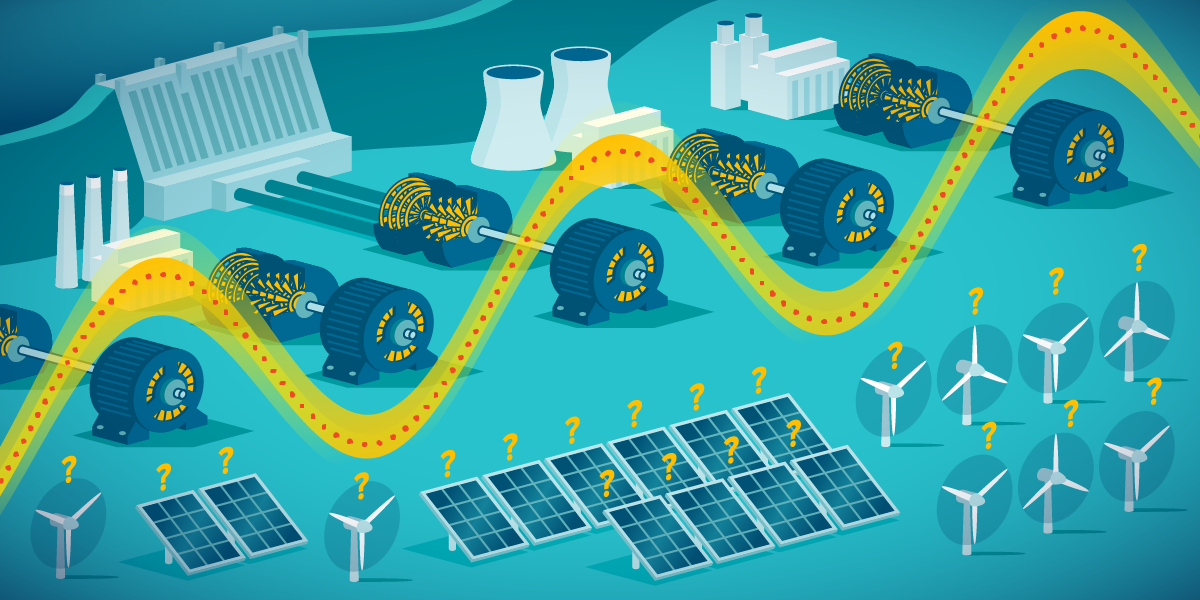Inertia Is a Growing Challenge for the Grid, But There Are Solutions

An EPRI study looks at the potential impacts of reduced inertia on frequency stability in the world’s electric power grids and reviews emerging solutions.
Turbines, generators, and motors in fossil, nuclear, and hydro power plants spin at speeds proportional to grid frequency. The rotational energy of these massive devices provides significant inertia that can counteract changes in grid frequency due to disturbances. For example, if one power plant in a region goes offline, grid frequency will decrease. Other spinning generators can respond by speeding up slightly to resist the frequency shift and stabilize the grid.
Because solar energy plants don’t have any moving parts (and thus inertia), the power system’s inertia declines as solar penetration grows—potentially leading to rapid frequency changes. If left unchecked, such changes can cause electricity service interruptions. Wind generation likewise does not contribute inertia because most modern wind turbines transmit energy through power electronics and are not connected directly to the grid. According to the EPRI study, smaller, islanded grids already face inertia-related challenges. Grid operators in Ireland and Nordic countries regularly adjust power plants’ output based on predictions that low inertia will cause service interruptions.
“These operators are monitoring inertia on a second-to-second basis and re-dispatching power plants to maintain frequency stability,” said EPRI Principal Project Manager Aidan Tuohy.
The study identifies numerous potential technological, operational, and market-based solutions for grid operators, such as:
- Controlling the inverters of solar and wind power plants and battery energy storage systems to provide frequency support during disruptions
- Requiring an inertia “floor” or minimum that results in the operation of additional spinning generators
- Compensating generators for providing inertia to encourage them to stay online
According to the study’s authors, these and other solutions need to be evaluated for their effectiveness in maintaining grid stability. In addition, operators need more real-time data on the impacts of reduced inertia along with analytical tools to evaluate those impacts.
Key EPRI Technical Experts:
Aidan Tuohy, Adrian Kelly
For more information, contact techexpert@eprijournal.com.
Additional Resources:
Artwork by James Provost

